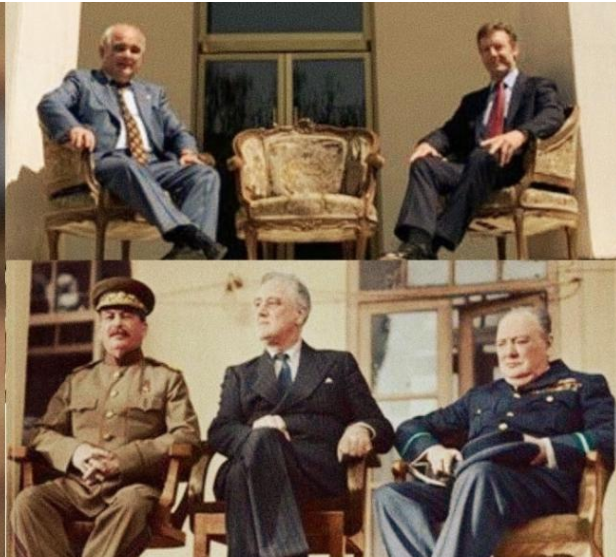September 3, 2021

Iran summoned the Russian and British ambassadors after an “insulting” photograph was posted on the Russian embassy’s Twitter account recalling the 1943 Tehran Conference, when Iran was occupied by the Allied powers.
The picture, which outgoing Foreign Minister Mohammad-Javad Zarif called “extremely inappropriate,” has drawn criticism from Iran, with some officials saying on Twitter that the aim appeared to be to remind Iranians of a time when their country was under foreign occupation.
Majlis Speaker Moham-mad-Baqer Qalibaf jumped in, criticizing the photo as “inappropriate and inconsistent with diplomatic protocols,” calling on the Foreign Ministry to follow up on the insult. “Both ambassadors must swiftly issue an official apology, otherwise firm diplomatic action will be necessary,” Qalibaf said.
The photo showed Russian Ambassador Levan Dzhagaryan and British Ambassador Simon Shercliff sitting on the verandah of the Russian Embassy where US President Franklin D. Roosevelt, British Prime Minister Winston Churchill and Soviet leader Joseph Stalin sat together at the Russian Embassy during the 1943 strategy meeting.
Foreign Minister-designate Hossein Amir-Abdollahian said it “showed disregard for diplomatic etiquette and the national pride of the Iranian people.”
“During the meeting, the Russian ambassador stated that his intention to publish this photo was merely a reminder of Russia’s alliance with Britain against the Nazi army during World War Two,” Iran’s Foreign Ministry said in a statement.
“There was no anti-Iranian motive behind the photo,” the Iranian statement added, seeming to support what the Russian ambassador said.
While emphasizing friendly relations between Iran and Russia, the Iranian Foreign Ministry statement made clear, however, that publication of the photograph “was not acceptable.”
The Russian Embassy said it had no wish to cause offence. “Taking into account the ambiguous reaction to our photo, we would like to note that it does not have any anti-Iranian context. We were not going to offend the feelings of the friendly Iranian people,” it tweeted.
The British envoy “regretted the misunderstanding” over the picture and said that “there was no bad intention behind it.”
The kerfuffle appeared to originate with Zarif’s angry tweet. There was no social media uproar noted before Zarif tweeted. But the criticism quickly snowballed after Zarif raised the issue. Many in the media also condemned the publication of the photo. Abdollah Ganji, managing editor of the right wing daily Javan, even sparked the hint of a conspiracy, saying, “They left the US chair empty. What message are they trying to convey?”
The 1943 “Big Three” conference in Tehran is offensive to many in Iran as an example of the violation of the country’s national sovereignty by the three countries, two of which (Britain and the Soviet Union) had invaded and occupied Iran in 1941, despite the fact that Tehran had declared neutrality in the war.
The Iranian government was not informed in advance of the Big Three meeting on Iranian soil nor invited to it, although Roosevelt made a point of meeting with the Shah individually and the Big Three issued a statement saying they would leave Iran once the war ended.
Iran was used by the allies as a highway over which they delivered much equipment to the Soviet Union. While the “Murmansk Run” of ships carrying supplies through the Arctic to the northern Soviet Union has gotten much more publicity over the years, far more equipment was carried through Iran on the Trans-Iranian railway and by truck up the eastern side of Iran.
